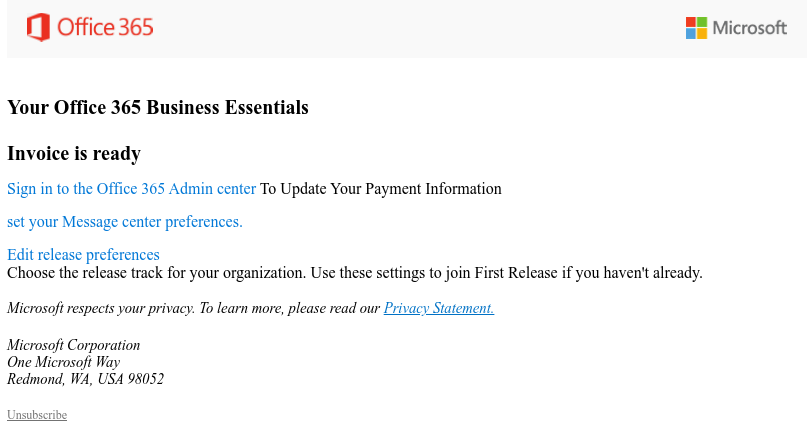

Rewterz Threat Alert – More Than a Dozen Obfuscated APT33 Botnets Used for Extreme Narrow Targeting
November 15, 2019
Rewterz Threat Alert – Phishing Campaign Threatens an Automatic Password Change
November 18, 2019
Rewterz Threat Alert – More Than a Dozen Obfuscated APT33 Botnets Used for Extreme Narrow Targeting
November 15, 2019
Rewterz Threat Alert – Phishing Campaign Threatens an Automatic Password Change
November 18, 2019Severity
Medium
Analysis Summary
A new phishing campaign is actively targeting Microsoft Office 365 administrators with the end goal of compromising their entire domain and using newly created accounts on the domain to deliver future phishing emails. The attackers use phishing emails designed to look like they are coming from Microsoft, with the Office 365 logo shown at the top, and delivered using “validated domains” “from a legitimate organization’s Office 365 infrastructure”.
The phishing emails ask the targets to sign into their account on the Office 365 Admin center to update their payment information, and it even has links to Microsoft’s privacy statement and an unsubscribe option at the bottom of the message.
Admins are also invited to choose the release track for their org and use the settings to join “First Release” if they haven’t done it already.
Once they click the sign-in link embedded in the phishing email, the targets are sent to a fake Microsoft login page that requires them to enter their email or phone to proceed.
The attackers used accounts they created on previously compromised Office 365 domains for sending the phishing messages, this strategy allowing them to both evade detection by secure email gateways (SEGs) and avoid being spotted while maintaining their presence on a legitimate org’s domain.
Using a freshly created Office 365 account, makes it possible for them to go about their business without having to worry that the other users can spot their malicious activity “either by observing outgoing mail or receiving automated responses from failed delivery attempts.”

Impact
Credential theft
Remediation
- Always be suspicious about emails sent by unknown senders.
- Never click on the links/attachments sent by unknown senders.








